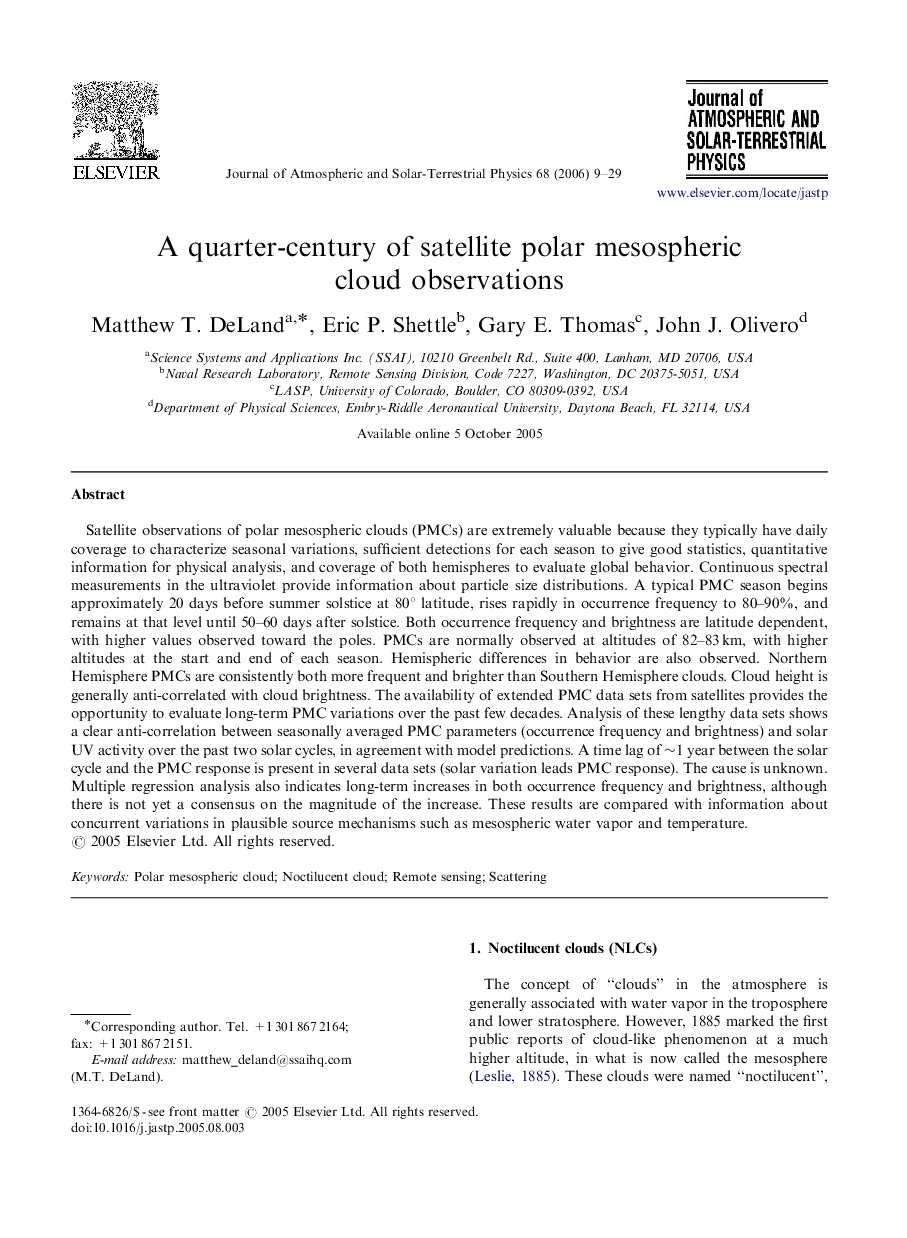| کد مقاله | کد نشریه | سال انتشار | مقاله انگلیسی | نسخه تمام متن |
|---|---|---|---|---|
| 1778438 | 1021813 | 2006 | 21 صفحه PDF | دانلود رایگان |
عنوان انگلیسی مقاله ISI
A quarter-century of satellite polar mesospheric cloud observations
دانلود مقاله + سفارش ترجمه
دانلود مقاله ISI انگلیسی
رایگان برای ایرانیان
کلمات کلیدی
موضوعات مرتبط
مهندسی و علوم پایه
علوم زمین و سیارات
فیزیک زمین (ژئو فیزیک)
پیش نمایش صفحه اول مقاله

چکیده انگلیسی
Satellite observations of polar mesospheric clouds (PMCs) are extremely valuable because they typically have daily coverage to characterize seasonal variations, sufficient detections for each season to give good statistics, quantitative information for physical analysis, and coverage of both hemispheres to evaluate global behavior. Continuous spectral measurements in the ultraviolet provide information about particle size distributions. A typical PMC season begins approximately 20 days before summer solstice at 80° latitude, rises rapidly in occurrence frequency to 80-90%, and remains at that level until 50-60 days after solstice. Both occurrence frequency and brightness are latitude dependent, with higher values observed toward the poles. PMCs are normally observed at altitudes of 82-83 km, with higher altitudes at the start and end of each season. Hemispheric differences in behavior are also observed. Northern Hemisphere PMCs are consistently both more frequent and brighter than Southern Hemisphere clouds. Cloud height is generally anti-correlated with cloud brightness. The availability of extended PMC data sets from satellites provides the opportunity to evaluate long-term PMC variations over the past few decades. Analysis of these lengthy data sets shows a clear anti-correlation between seasonally averaged PMC parameters (occurrence frequency and brightness) and solar UV activity over the past two solar cycles, in agreement with model predictions. A time lag of â¼1 year between the solar cycle and the PMC response is present in several data sets (solar variation leads PMC response). The cause is unknown. Multiple regression analysis also indicates long-term increases in both occurrence frequency and brightness, although there is not yet a consensus on the magnitude of the increase. These results are compared with information about concurrent variations in plausible source mechanisms such as mesospheric water vapor and temperature.
ناشر
Database: Elsevier - ScienceDirect (ساینس دایرکت)
Journal: Journal of Atmospheric and Solar-Terrestrial Physics - Volume 68, Issue 1, January 2006, Pages 9-29
Journal: Journal of Atmospheric and Solar-Terrestrial Physics - Volume 68, Issue 1, January 2006, Pages 9-29
نویسندگان
Matthew T. DeLand, Eric P. Shettle, Gary E. Thomas, John J. Olivero,